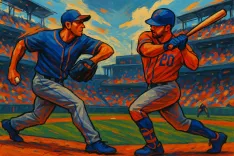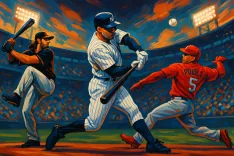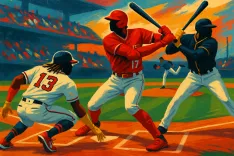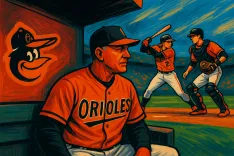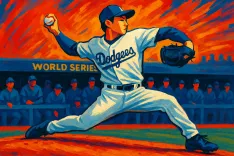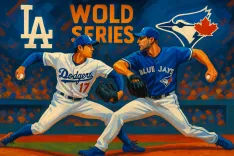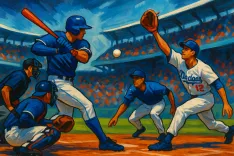MLB Trade Rumors: Analyzing Key Storylines as the Deadline Approaches

As Major League Baseball (MLB) trade rumor season typically intensifies as July 31 approaches, the period leading up to Memorial Day offers an early glimpse into potential narratives. In an effort to provide clarity, Moneyline has established a BS Meter with four tiers: non-existent, low, medium, and high. This tool aims to help fans gauge the likelihood of credible insights leading to actual trades while respecting the credibility of the sources cited.
One of the notable rumors emerging is the report from Mark Feinsand of MLB.com, which indicates that the Philadelphia Phillies reached out to veteran reliever David Robertson before José Alvarado’s subsequent 80-game performance-enhancing drug suspension was made public. According to Feinsand, there were no serious discussions about a deal. The BS Meter for this rumor is rated as low. The report's legitimacy is not in question; the Phillies were already in need of bullpen depth, particularly after the loss of Alvarado, who served as their top bullpen arm. Despite Robertson being a free agent this season after posting a 3.00 ERA and a 2.65 FIP in 68 games last year with the Texas Rangers, factors such as his age—40 years—raise questions about his marketability. Although it is anticipated that Robertson will pitch this season, his willingness to accept a contract and the timing of that decision remains uncertain. Furthermore, it may take time for him to resume pitching effectively at the major league level, regardless of the team he ultimately joins.
Another significant rumor, reported by Bob Nightengale of USA Today, suggests that the Los Angeles Dodgers and Chicago Cubs are actively monitoring Colorado Rockies infielder Ryan McMahon, anticipating a potential trade. The BS Meter categorizes this rumor as high. Historically, the Rockies have been reluctant to commit to a full-scale sell-off, even amid a poor season. Currently, McMahon's performance, with a .211 batting average and .706 OPS, raises concerns about his desirability to other teams, particularly those seeking third-base reinforcement. His contract stipulates that he will earn $32 million between 2026 and 2027, and given his struggles at the plate, teams may be wary of his acquisition. While a trade involving McMahon could occur if the Rockies choose to cover some salary or accept a lesser prospect in return, the current situation poses challenges, particularly for the Dodgers, who may not view him as a fitting addition unless they doubt Max Muncy’s capacity to recover from his slow start.
In another development, Jon Heyman has commented on the improbability of the Pittsburgh Pirates trading pitching prospect Paul Skenes this summer, labeling the idea as non-existent. Fans of contending teams have speculated about the possibility, but for the 22-year-old pitcher, who boasts a 2.12 ERA through his first 33 MLB starts, such a trade remains far-fetched. The Pirates have experienced a tumultuous season, yet trading a player of Skenes' caliber, often dubbed 'generational talent', would undermine the strategy of building around young, promising players. The team likely recognizes Skenes' potential as a foundational asset for future success.
Lastly, Nightengale also expressed the possibility that Rhys Hoskins could be a great fit for the Boston Red Sox should the Milwaukee Brewers opt to sell off players. This opinion, rather than a solid report, does highlight the potential for Hoskins, a power hitter, to thrive at Fenway Park. However, the Brewers are currently at a 24-26 standing and remain close enough to competition that trading Hoskins might not be imminent. Having recently returned from a torn left ACL, Hoskins has demonstrated a solid rebound with a .902 OPS this season. The Brewers may see the advantage of trading him to gain prospects while mitigating future financial commitments linked to his contract's buyout clause in light of his current performance and team dynamics.
Heyman further noted that the prospects of trading Luis Robert Jr. are highly unlikely, especially with his current struggles on the field. Robert's performance includes a steep decline with a .210 batting average this season, which diminishes his value in trade discussions. Notably, his contract initially seemed favorable, but his history of injuries, combined with a lackluster season, complicates his market positioning. Without a significant turnaround, Robert would likely not draw the high-level prospects that teams desire in a trade scenario.
